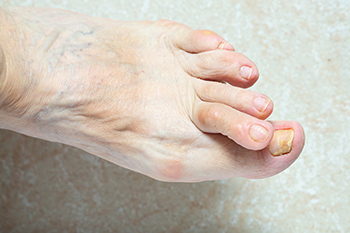
Choosing how to treat a hammertoe, which is a foot deformity, depends on whether the toe can still move and is flexible, or is stiff and fixed. The severity of the deformity also plays a role in deciding whether to opt for surgery. Surgery is considered when there is disabling pain that does not improve with non-surgical options, like taping for a flexible hammertoe, or wearing special shoes for a fixed hammertoe. For flexible hammertoes, soft-tissue procedures are used, while rigid ones might need surgery involving the bones. Different surgical techniques are employed based on whether the deformity is flexible, fixed, or involves a rotated toe. In some cases, shortening the metatarsal bone, which is part of the middle foot, is necessary. If you have a hammertoe that is causing pain and discomfort, it is strongly suggested that you schedule an appointment with a podiatrist for an examination and discussion of treatment options that may benefit you.
Hammertoe
Hammertoes can be a painful condition to live with. For more information, contact Tanisha Richmond, DPM from Richmond Foot & Ankle, LLC. Our doctor will answer any of your foot- and ankle-related questions.
Hammertoe is a foot deformity that affects the joints of the second, third, fourth, or fifth toes of your feet. It is a painful foot condition in which these toes curl and arch up, which can often lead to pain when wearing footwear.
Symptoms
- Pain in the affected toes
- Development of corns or calluses due to friction
- Inflammation
- Redness
- Contracture of the toes
Causes
Genetics – People who are genetically predisposed to hammertoe are often more susceptible
Arthritis – Because arthritis affects the joints in your toes, further deformities stemming from arthritis can occur
Trauma – Direct trauma to the toes could potentially lead to hammertoe
Ill-fitting shoes – Undue pressure on the front of the toes from ill-fitting shoes can potentially lead to the development of hammertoe
Treatment
Orthotics – Custom made inserts can be used to help relieve pressure placed on the toes and therefore relieve some of the pain associated with it
Medications – Oral medications such as anti-inflammatories or NSAIDs could be used to treat the pain and inflammation hammertoes causes. Injections of corticosteroids are also sometimes used
Surgery – In more severe cases where the hammertoes have become more rigid, foot surgery is a potential option
If you have any questions please contact our office located in Dayton, OH . We offer the newest diagnostic and treatment technologies for all your foot and ankle needs.